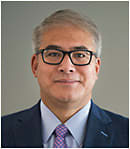I have a Japanese mother who, when I was growing up, firmly believed that a peculiar Kampo pill whose bottle was adorned with kanji characters could stave off flu during winter, and that her special “elixir” had the power to prevent cancer. Engaging in debates with her about the Western treatments I meticulously studied in medical school always proved amusing. Yet, as the adage goes, your mother is always right.
The landscape of medicine has undergone transformative changes over time, presenting 2 predominant paradigms — Eastern and Western medicine. Eastern medicine, characterized by practices such as acupuncture, hot cupping, massage therapy, tai chi, reiki, yoga, meditation, and the use of herbal remedies, boasts origins that trace back to ancient times. Massage therapy, with its origins dating back 5,000 years, and evidence from fossil records showcasing the utilization of plants as medicinal aids at least 60,000 years ago, underscore the deep historical roots of this approach.
Central to Eastern medicine is the treatment of the entire individual, emphasizing holistic well-being and addressing not just symptoms but the entirety of the body. Fundamental to this approach are the concepts of balance among the 4 humors — blood, mucus, yellow bile, and black bile — as well as the 4 qualities of heat, cold, moisture, and dryness. Maladies are seen as arising from imbalances within these forces. This comprehensive strategy encompasses healing of the body, mind, and soul in the quest for balance. Contrasting this, Western medicine employs molecular-targeted drugs that target specific ailments, often identified through blood tests and medical imaging. The primary focus lies in eradicating the issue itself or alleviating its symptoms, often addressing isolated organ systems.
The demarcation between Western and Eastern medicine is not absolute; rather, it is a domain of intriguing interplay. Acupuncture, validated by its efficacy in pain management, and the demonstrable potency of certain herbal compounds in disease treatment attest to the synergy between these paradigms. Contemporary technology facilitates the exploration of the pharmacology underlying numerous herbal remedies, fostering a potential alliance with Western medicine.
Venturing into the next phase of medical advancement, the horizons broaden to encompass computers, light, sound, and even electricity as potential therapeutic modalities. A notable instance is photobiomodulation therapy, leveraging light-induced photochemical reactions in a nonthermal manner, as evidenced by a recent randomized study outlined in this issue. While further studies with FDA-approved outcome measures will be required, these preliminary findings are undeniably promising. Additionally, the realm of microcurrent stimulation is being explored for the treatment of age-related macular degeneration.
The trajectory of medicine’s evolution may soon pivot toward computational realms. Drug development is undergoing a seismic shift with supercomputers capable of sifting through screening libraries in seconds, while artificial intelligence (AI) empowers pharmaceutical enterprises to dissect colossal datasets. AI tools like AlphaFold2, DeeperBind, DeepTox, and DeepAffinity not only facilitate the design of novel molecules but also prognosticate their efficacy. The avant-garde notion of simulated clinical trials is also gaining traction, with potential to expedite drug development significantly. We certainly live in an exciting time. RP










